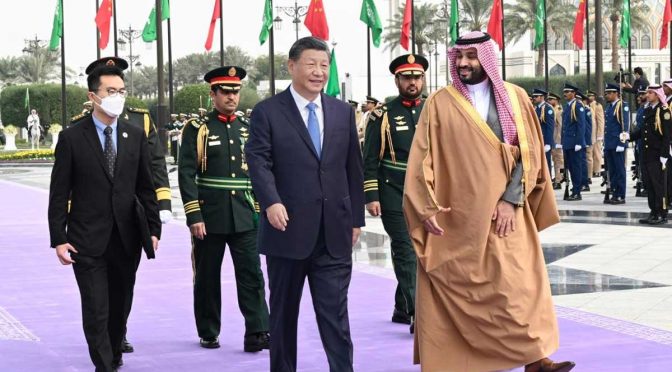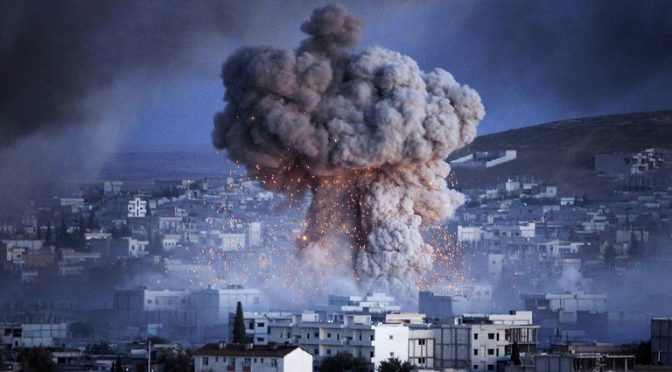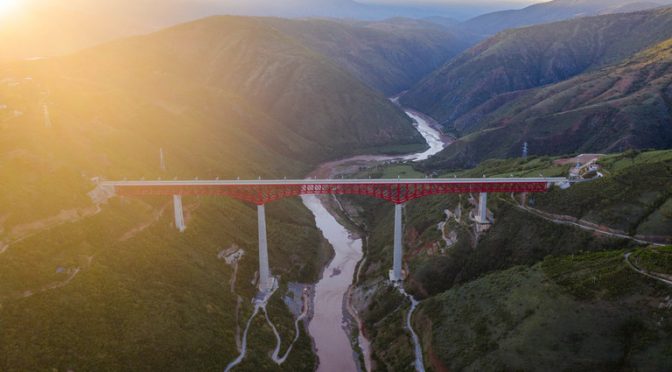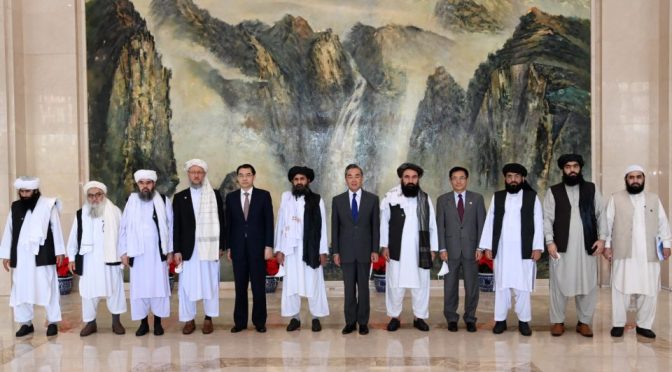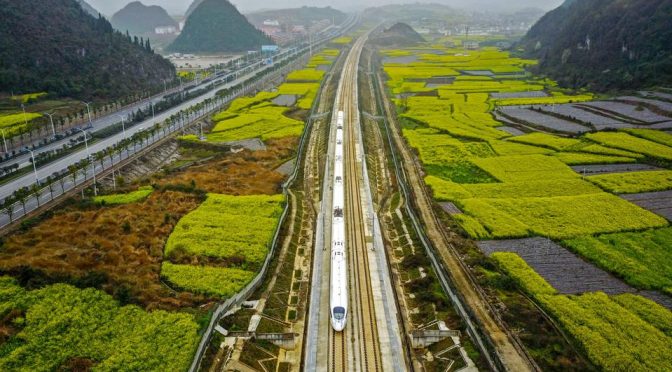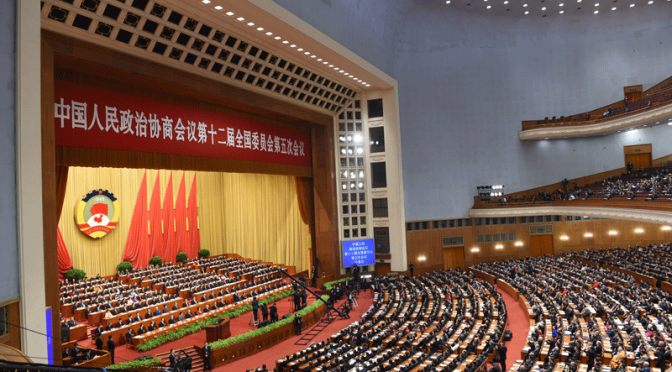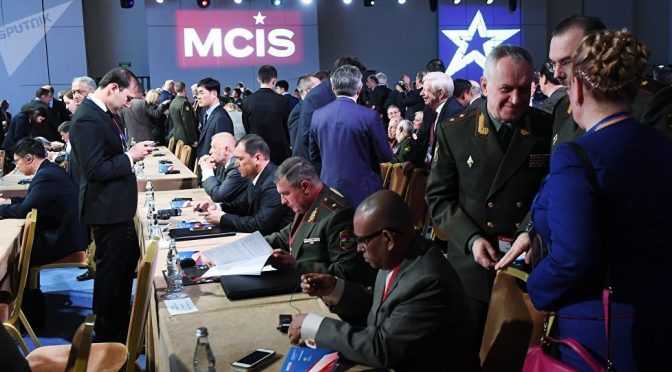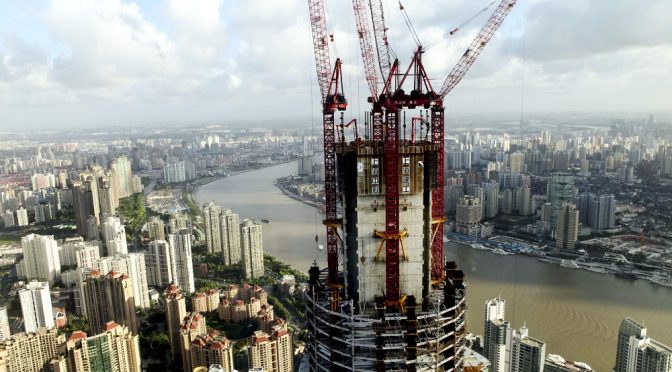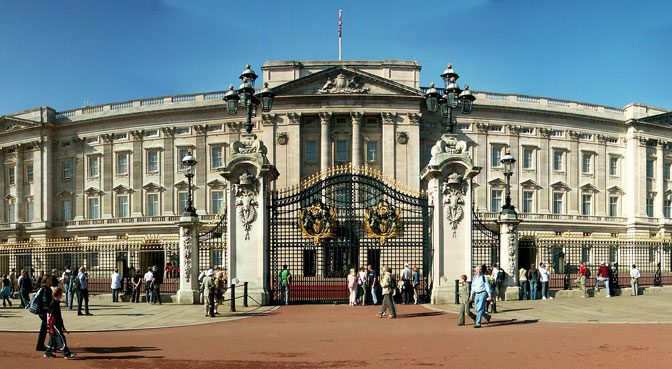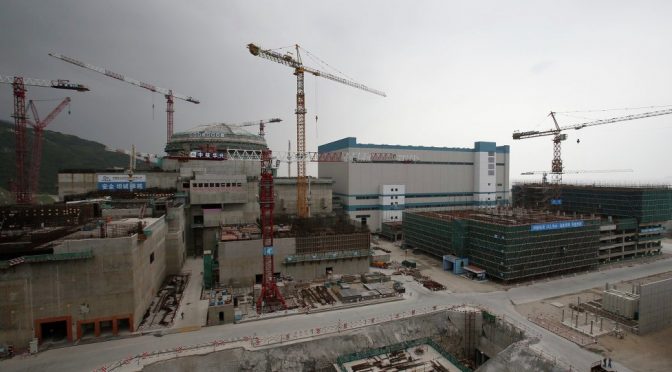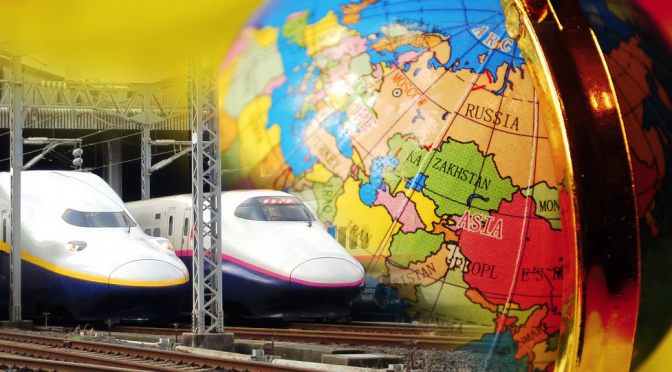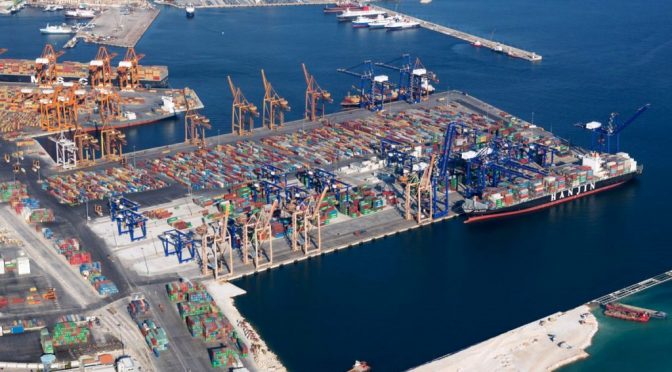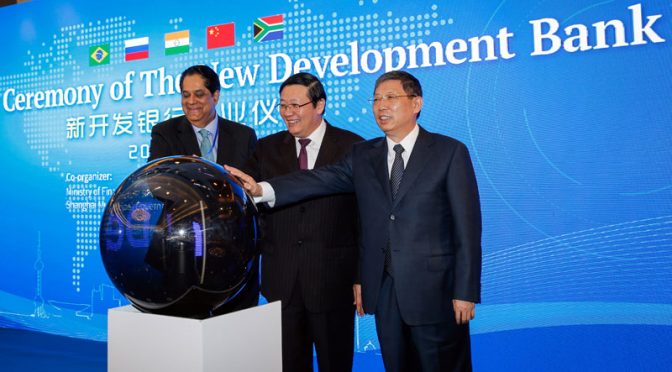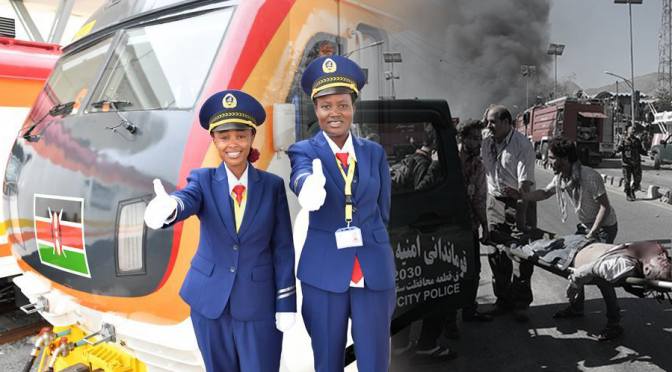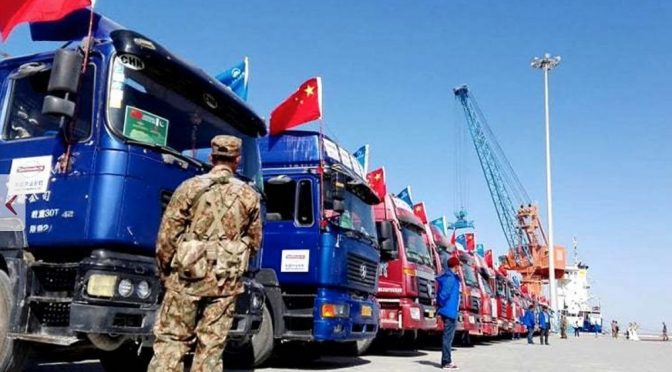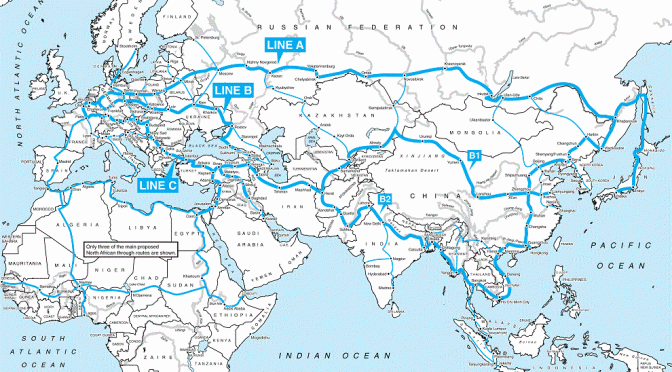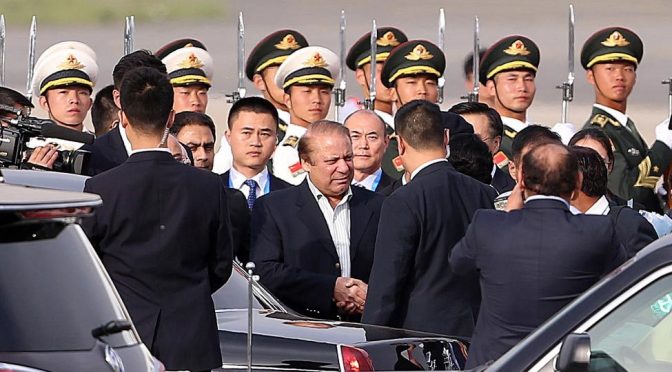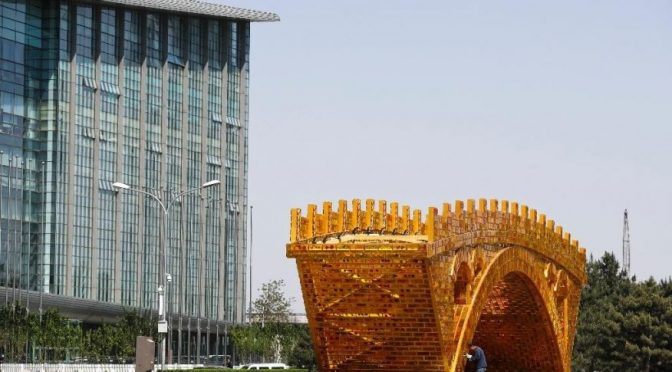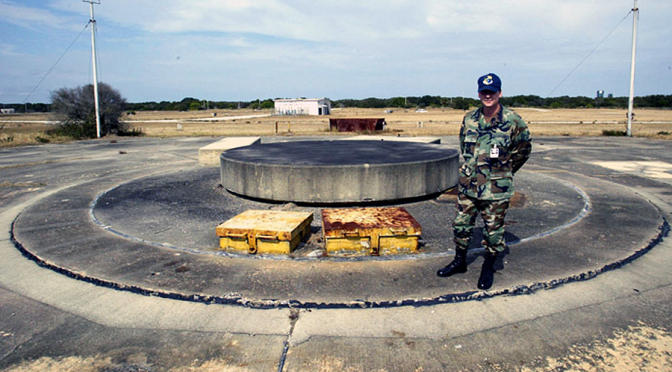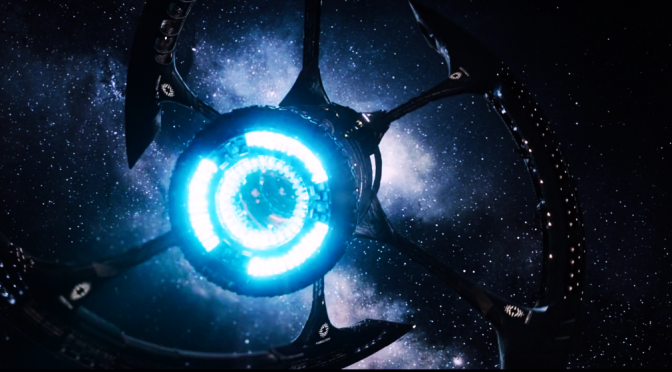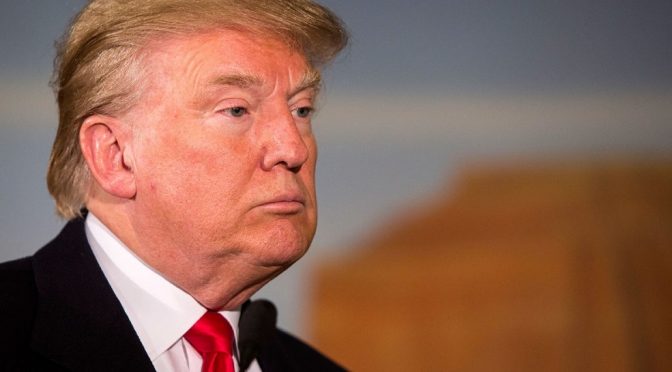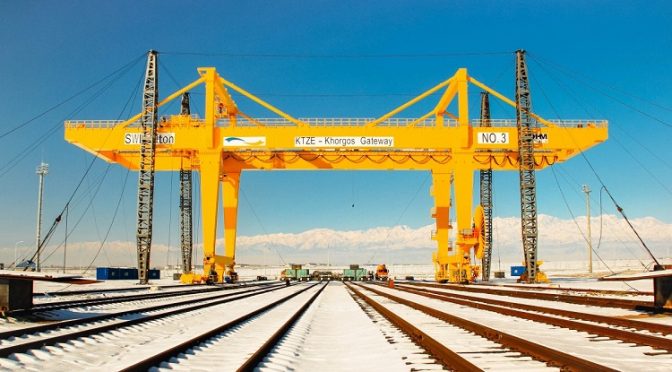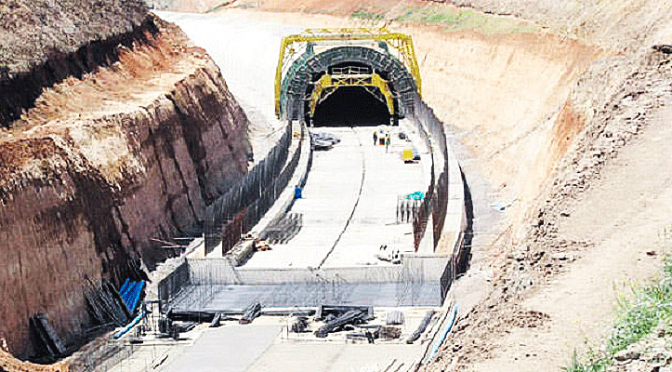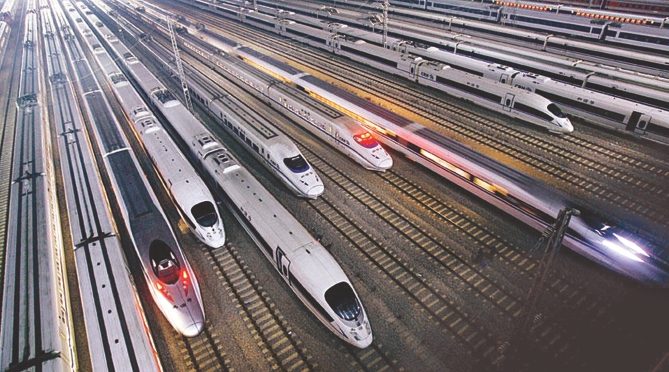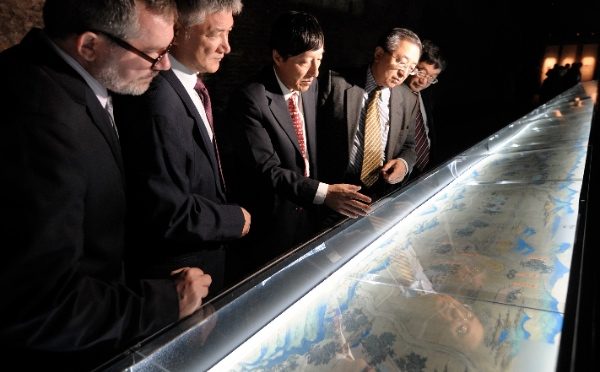In the complex landscape of international relations, two distinct paradigms have emerged in the Indo-Pacific region. On one side, there’s a push for mutual progress and development through economic cooperation and infrastructure projects.
Continue reading Cooperation vs. Confrontation in the Indo-PacificCategory Archives: One Belt One Road
How the BRI train took the road to Shangri-La
In less than a decade, China’s BRI has fundamentally transformed global geopolitics. It is already far too late for the west to compete.
Continue reading How the BRI train took the road to Shangri-LaCan You Smell What the Year of the Rabbit is Cooking?
The New Silk Roads, or BRI, as well as the integration efforts of BRICS+, the SCO and the EAEU will be on the forefront of Chinese policy.
Continue reading Can You Smell What the Year of the Rabbit is Cooking?Why BRI is Back With A Bang in 2023
As Beijing’s Belt and Road Initiative enters its 10th year, a strong Sino-Russian geostrategic partnership has revitalized the BRI across the Global South.
Continue reading Why BRI is Back With A Bang in 2023Xi of Arabia and the Petroyuan Drive
Xi Jinping has made an offer difficult for the Arabian Peninsula to ignore: China will be guaranteed buyers of your oil and gas, but we will pay in yuan.
Continue reading Xi of Arabia and the Petroyuan DriveIndia-Russia-Iran: Eurasia’s New Transportation Powerhouses
No longer just an ‘alternative route’ on a drawing board, the International North South Transportation Corridor (INSTC) is paying dividends in a time of global crisis. And Moscow, Tehran and New Delhi are now leading players in the Eurasian competition for transportation routes.
Tectonic shifts continue to rage through the world system with nation-states quickly recognizing that the “great game” as it has been played since the establishment of the Bretton Woods monetary system in the wake of the second World War, is over.
But empires never disappear without a fight, and the Anglo-American one is no exception, overplaying its hand, threatening and bluffing its way, right to the end.
End of an order
It seems no matter how many sanctions the west imposes on Russia, the victims most affected are western civilians. Indeed, the severity of this political blunder is such that the nations of the trans-Atlantic are heading towards the greatest self-induced food and energy crisis in history.
While the representatives of the “liberal rules-based international order” continue on their trajectory to crush all nations that refuse to play by those rules, a much saner paradigm has come to light in recent months that promises to transform the global order entirely.
The multipolar solution
Here we see the alternative security-financial order which has arisen in the form of the Greater Eurasian Partnership. As recently as 30 June at the 10th St Petersburg International Legal Forum, Russian President Vladimir Putin described this emerging new multipolar order as:
“A multipolar system of international relations is now being formed. It is an irreversible process; it is happening before our eyes and is objective in nature. The position of Russia and many other countries is that this democratic, more just world order should be built on the basis of mutual respect and trust, and, of course, on the generally accepted principles of international law and the UN Charter.”
Since the inevitable cancellation of western trade with Russia after the Ukraine conflict erupted in February, Putin has increasingly made clear that the strategic re-orientation of Moscow’s economic ties from east to west had to make a dramatically new emphasis on north to south and north to east relations not only for Russia’s survival, but for the survival of all Eurasia.
Among the top strategic focuses of this re-orientation is the long overdue International North South Transportation Corridor (INSTC).
On this game-changing mega-project, Putin said last month during the plenary session of the 25th St Petersburg International Economic Forum:
“To help companies from other countries develop logistical and cooperation ties, we are working to improve transport corridors, increase the capacity of railways, trans-shipment capacity at ports in the Arctic, and in the eastern, southern and other parts of the country, including in the Azov-Black Sea and Caspian basins – they will become the most important section of the North-South Corridor, which will provide stable connectivity with the Middle East and Southern Asia. We expect freight traffic along this route to begin growing steadily in the near future.”
The INSTC’s Phoenix Moment
Until recently, the primary trade route for goods passing from India to Europe has been the maritime shipping corridor passing through the Bab El-Mandeb Strait linking the Gulf of Aden to the Red Sea, via the highly bottlenecked Suez Canal, through the Mediterranean and onward to Europe via ports and rail/road corridors.
Following this western-dominated route, average transit times take about 40 days to reach ports of Northern Europe or Russia. Geopolitical realities of the western technocratic obsession with global governance have made this NATO-controlled route more than a little unreliable.
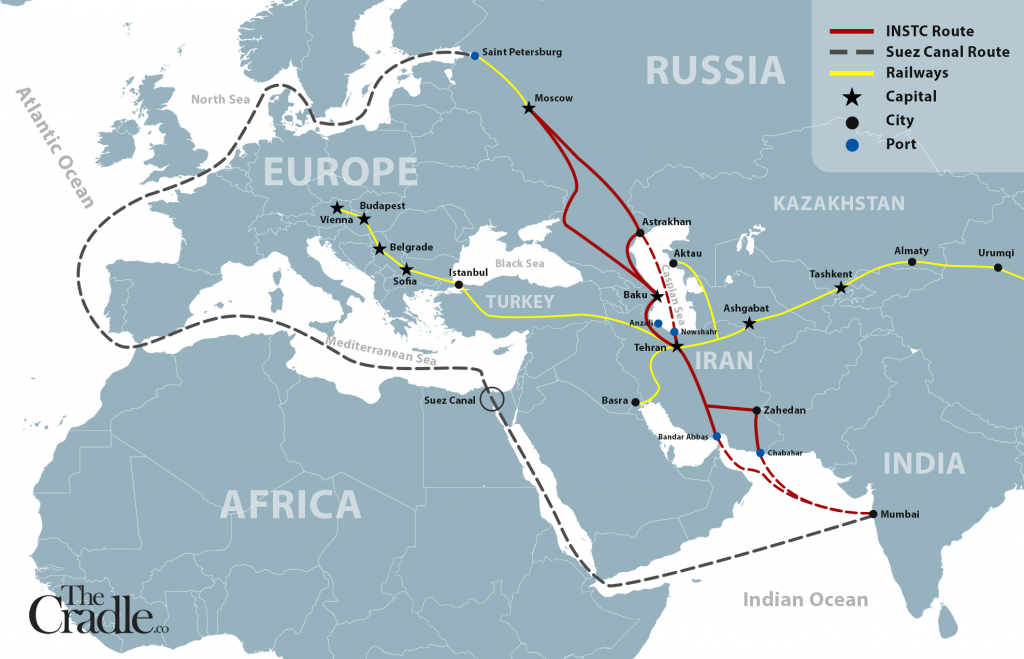
Despite being far from complete, goods moving across the INSTC from India to Russia have already finished their journey 14 days sooner than their Suez-bound counterparts while also seeing a whopping 30 percent reduction in total shipping costs.
These figures are expected to fall further as the project progresses. Most importantly, the INSTC would also provide a new basis for international win-win cooperation much more in harmony with the spirit of geo-economics unveiled by China’s Belt and Road Initiative (BRI) in 2013.
Cooperation not competition
Originally agreed upon by Russia, Iran and India in September 2000, the INSTC only began moving in earnest in 2002 – albeit much more slowly than its architects had hoped.
This 7,200 km multimodal megaproject involves integrating several Eurasian nations directly or indirectly with rail, roads and shipping corridors into a united and tight-knit web of interdependency. Along each artery, opportunities to build energy projects, mining, and high tech special economic zones (SEZs) will abound giving each participating nation the economic power to lift their people out of poverty, increase their stability and their national power to chart their own destinies.
Beyond the founding three nations, the other 10 states who have signed onto this project over the years include Armenia, Georgia, Turkey, Azerbaijan, Kazakhstan, Belarus, Tajikistan, Kyrgyzstan, Oman, Syria and even Ukraine (although this last member may not remain on board for long). In recent months, India has officially invited Afghanistan and Uzbekistan to join too.
While western think tanks and geopolitical analysts attempt to frame the INSTC as an opponent to China’s BRI, the reality is that both systems are extremely synergistic on multiple levels.
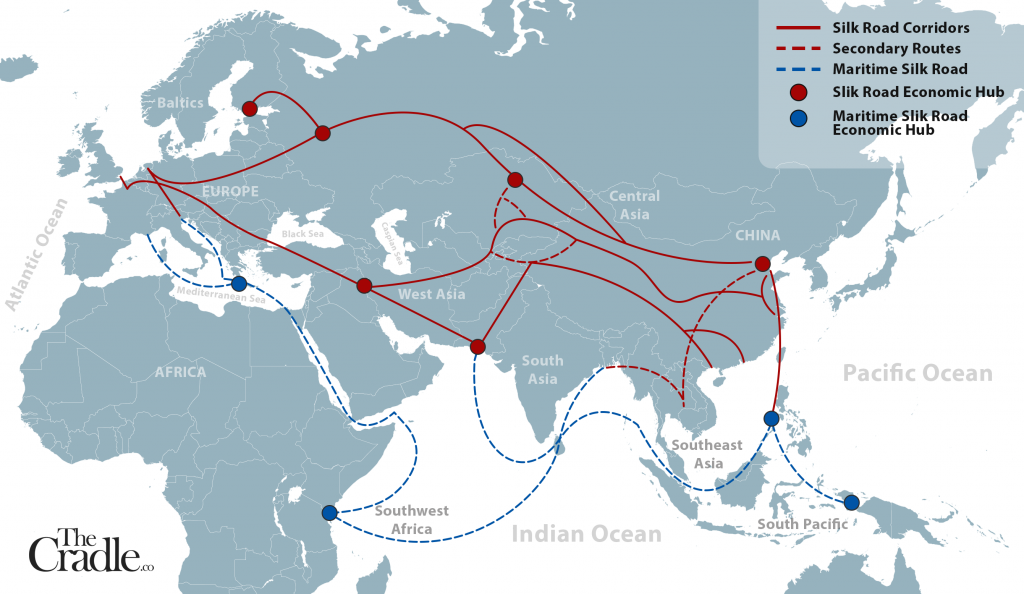
Unlike the west’s speculation-driven bubble economy, both the BRI and INSTC define economic value and self-interest around improving the productivity and living standards of the real economy. While short term thinking predominates in the myopic London-Wall Street paradigm, the BRI and INSTC investment strategies are driven by long-term thinking and mutual self-interest.
It is no small irony that such policies once animated the best traditions of the west before the rot of unipolar thinking took over and the west lost its moral compass.
An integrated alternative
The INSTC’s two major bookends are the productive zone of Mumbai in India’s Southeast region of Gujarat and the northern-most Arctic port of Lavna in Russia’s Kola Peninsula of Murmansk.
This is not only the first port constructed by Russia in decades, but when completed, will be one of the world’s largest commercial ports with an expected capacity to process 80 million tons of goods by 2030.
The Lavna Port is an integral part of Russia’s Arctic and Far East Development vision and is a central piece to Russia’s current Comprehensive Plan for Modernization and Expansion of Main Infrastructure and its Northern Sea Route which is expected to see a five-fold increase of Arctic freight traffic over the coming years. These projects are integrally linked to China’s Polar Silk Road.
Between these bookends, the INSTC moves freight from India into Iran’s Port of Bandar Abbas where it is loaded onto double-tracked rail to the Iranian city of Bafq and then to Tehran before coming to the Anzali Port on the southern Caspian Sea.
‘Be like water’
Because the INSTC is based on a flexible design concept capable of adapting to a changing geopolitical environment (very much like the BRI), there are a multitude of connecting lines that branch off the main North-South artery before goods make it to the Caspian Sea.
These include an eastern and western corridor branching off from the city of Bafq towards Turkey and thence Europe via the Bosporus and also eastward from Tehran to Turkmenistan, Uzbekistan, Kazakhstan and thereafter into Urumqi in China.
Railway is still relevant
From the Anzali Port in the north of Iran, goods may travel by the Caspian Sea towards Russia’s Astrakhan Port where it is then loaded onto trains and trucks for transport to Moscow, St Petersburg and Murmansk. Inversely goods may also travel over land to Azerbaijan where the 35 km Iran Rasht-Caspian railway is currently under construction with 11 km completed as of this writing.
Once completed, the line will connect the Port of Anzali with Azerbaijan’s Baku, offering goods a chance to either continue onwards to Russia or westward toward Europe. A Tehran-Baku rail route already exists.
Additionally, Azerbaijan and Iran are currently collaborating on a vast $2 billion rail line connecting the 175 km Qazvin-Rasht railway which began operations in 2019 with a strategic rail line connecting Iran’s Rasht port on the Caspian to the Bandar Abbas Complex in the south (to be completed in 2025). Iran’s Minister of Roads and Urban Development Rostam Ghasemi described this project in January 2022 saying:
“Iran’s goal is to connect to the Caucasus, Russia, and European countries. For this purpose, the construction of the Rasht-Astara railway is in the spotlight. During the Iranian president’s visit to Russia, discussions were conducted in this regard, and construction of the railway line is expected to begin soon with the allocation of needed funds.”
In recent months, India’s Prime Minister Narendra Modi has lobbied to incorporate the joint Iran-India built Chabahar Port into the INSTC which will likely occur since another 628 km rail line from the port to the Iranian city of Zahedan is currently under construction.
Once completed, goods will easily move onward to the city of Bafq. While some critics have suggested that the Chabahar Port is antagonistic to Pakistan’s Gwadar Port, Iranian officials have constantly referred to it as Chabahar’s twin sister.
Since 2014, a vast rail and transportation complex has grown around the co-signers of the Ashkabat Agreement (launched in 2011 and upgraded several times over the past decade). These rail networks include the 917.5 km Iran-Turkmenistan-Kazakhstan route launched in 2014, and Turkmenistan-Afghanistan-Tajikistan rail/energy project launched in 2016 which is currently seeing extensions that could easily go into Pakistan.
In December 2021, the 6540 km Islamabad to Istanbul rail line (via Iran) recommenced operations after a decade of inaction. This route cuts the conventional sea transit route time of 21 days by half. Discussions are already underway to extend the line from Pakistan into China’s Xinjiang Province linking the INSTC ever more closely into the BRI on yet another front.

Finally, June 2022 saw the long-awaited unveiling of the 6108 km Kazakhstan-Iran-Turkey rail line which provides an alternative route to the under-developed Middle Corridor. Celebrating the inaugural 12 day voyage of cargo, Kazakhstan’s President Kasym-Jomart Tokayev stated: “Today, we welcomed the container train, which left Kazakhstan a week ago. Then it will go to Turkey. This is a significant event, given the difficult geopolitical conditions.”
Despite the fact that the INSTC is over 20 years old, global geopolitical dynamics, regime change wars, and ongoing economic warfare against Iran, Syria and other US target states did much to harm the sort of stable geopolitical climate needed to emit large scale credit requisite for long term projects like this to succeed.
Caspian Summit Security breakthroughs
As proof that necessity truly is the mother of invention, the systemic meltdown of the entire post-WW2 edifice has forced reality to take precedence over the smaller-minded concerns that kept the diverse nations of Sir Halford John Mackinder’s “World Island” from cooperating. Among these points of endless conflict and stagnation which has upset great economic potential over the course of three decades, the Caspian zone stands out.
It is in this oil and natural gas rich hub that the five Caspian littoral states (Russia, Iran, Azerbaijan, Kazakhstan and Turkmenistan) have found a power to break through on multi-level security, economic and diplomatic agreements throughout the June 29-30, 2022 Sixth Caspian Summit in Ashgabat, Turkmenistan.
This summit placed a high priority on the INSTC with the region becoming both a north-south and east-west transportation hub. Most importantly, the leaders of the five littoral states made their final communique center around the region’s security since it is obvious that divide-to-conquer tactics will be deployed using every tool in the asymmetrical warfare tool basket going forward.
Chief among the agreed-upon principles were indivisible security, mutual cooperation, military cooperation, respect for national sovereignty, and non-interference. Most importantly, the banning of foreign military from the land and waters of the Caspian states was firmly established.
While no final agreement was reached over the disputed ownership of resources within the base of the Caspian, the stage was set for harmonization of partner states’ security doctrines, a healthy environment was established for the second Caspian Economic Summit which will take place in Autumn of this year and which will hopefully resolve many of the disputes pertaining to Caspian resource ownership.
Although geopolitical storms continue to intensify, it is increasingly clear that only the multipolar ship of state has demonstrated the competence to navigate the hostile seas, while the sinking unipolar ship of fools has a ruptured hull held together by little more than chewing gum and heavy doses of delusion.
Belt & Road Reaching Far and Wide in Middle East
“All eyes on Ukraine,” writes a former staff member of a British prime minister in an email. That is understandable, but not to the exclusion of everything else. In particular, Europe should spare a few minutes to consider the expansion of China’s Belt and Road Initiative across the eastern and southern shores of the Mediterranean.
Continue reading Belt & Road Reaching Far and Wide in Middle EastThis One-Two Punch from China & Russia Marks the End of American Adventurism
Syria’s inclusion in the Belt and Road Initiative is the final act in a long saga against American imperialism that shows how China and Russia can effectively counter U.S. intervention in the future.
Continue reading This One-Two Punch from China & Russia Marks the End of American Adventurism‘The country that bombed you is your friend. The one that built your new railway is your enemy’
This is the Western media’s bizarre messaging to the people of Laos, a nation that was carpet bombed by America, and which is now being vilified for accepting a new $9 billion railway line paid for by China.
Thursday was National Day in Laos, a celebration marking 46 years since the landlocked Southeast Asian nation deposed its monarchy and became a revolutionary communist state, an effort which was supported by Vietnam.
This year, the anniversary had added significance, as it saw the opening of a major new project, an electrified high-speed and freight railway system connecting the capital city, Vientiane with its northern neighbour, China.
The $9 billion project is part of the Belt and Road Initiative, and has been hailed as one of its flagship achievements. It is the first commercial and industrial railway in Laos, which, given its geography and the fact it is surrounded by mountainous terrain, has not previously had many options to expand its exports and generate economic growth.
Now, though, it has a direct rapid link into the world’s second largest economy and the world’s largest consumer market by population, and a connection to the booming ports of Guangdong. In terms of what it will bring to Laos, it is a game changer. So, what’s not to like about it?
To nobody’s surprise, the mainstream media have responded to the railway with the usual anti-China negativity. A plethora of articles sought to paint the project as a ‘debt trap’, promoting the accusation that Beijing loans countries money for projects they cannot afford and then exerts political leverage over it.
The Financial Times, for one, ran with a cynical article headlined ‘Laos to open Chinese-built railway amid fears of Beijing’s influence’. It implied that somehow Laos feels threatened or fears the construction of this very pioneering railway project (which the country’s own leader made sure he was the first to travel on). This suggestion of ‘fears of Chinese influence’ has become a common feature on such stories, which seek to cast doubt over anything positive China may be achieving or doing.
A common Twitter meme among pro-China users which has followed from stories like this asks: “but at what cost?” highlighting the frequency of such negative coverage.
And if you Google “China, but at what cost?” you can find a great many examples of articles published in major outlets. In producing such pieces, the broader intention is to depict Beijing’s actions as unwanted, threatening and constantly facing opposition. In the case of the Laos railway project, the ‘problem’ is it was financed by debt, and therefore it is not a positive step.
Yet this argument is as insulting as it is outright insensitive to Laos’ contemporary history. Anyone who knows anything about Laos’ relatively recent past will be well aware that China is not the country to fear, but the United States – the nation that dropped over 260 million cluster bombs on Laos and completely devastated the country as an extension of the Vietnam War, making it the most single bombed nation in history and claiming over 50,000 lives.
Many of these bombs remain unexploded and litter the countryside of Laos, continuing to kill civilians. In constructing the new railway, workers first had to clear the unexploded ordnance. How is it that the world and the mainstream media remain indifferent to this atrocity? And how, by any stretch of the imagination, can they claim that China is the true threat to Laos, and that the US and its allies act in the true interests of the country?
Herein lies the problem. Such a mindset symbolizes the elitism, chauvinism and self-righteousness of the countries of the West, which are ideologically inclined to believe that they stand for the ‘true interests’ of the ordinary people in the countries they profess to liberate.
Western politics peddles the assumption that through countries’ adherence to liberal democracy, they exclusively hold a single, universal, impartial and moralistic truth, derived from the ontological legacy of Christianity, and they have an obligation to introduce it to others. The West always acts truthfully and in good faith, while its enemies do not. And therefore, so the logic goes, any policy the US or its allies direct towards Laos is motivated by sincere intent and goodwill for its interests, and in turn, anything that China does is bad-faith, expansionist and power-hungry behaviour motivated by a desire to influence or control the country.
This creates the bizarre scenario whereby Beijing is depicted as evil and sinister for building a railway to connect to its neighbour – but we should forget America dropping millions of bombs on the country because it was done in the name of ‘freedom’. I’m sure you can imagine how the media would react if China did the latter.
Those who push this narrative predictably omit any insight into how Laos itself thinks about the situation. Another piece which took a similar stance, published in The Diplomat, was titled ‘Laos-China Railway inaugurated amid mounting debt concerns’.
But like the ‘fears of Beijing influence’ expressed in the FT, who are these ‘concerns’ from? The report cites the “Washington-based Center for Global Development” and what it merely describes as a “US based analyst” as sources who push the ‘debt trap’ narrative. But nowhere in any of these articles is there an actual voice direct from Laos who raises any fear of China, or objects to the railway’s existence.
Instead, they simply talk on the country’s behalf, obscuring the reality that a communist state which suffered from extreme levels of aggression from the US probably does not see its northern neighbour – and its most important economic partner – as a threat to its regime. With many more articles running variations of the same theme, there is minimal effort given to the consideration that the railway will help the country rapidly expand its exports, sustain greater growth and help Laos pay for the project.
The Laos-China railway has provided a textbook example of how the media can distort a story in order to fortify an incriminating narrative, while brushing aside brutal realities. We are shown a lopsided world, where the travesty of a country being bombed into oblivion with consequences lasting decades is ignored, and the preference is to try to convince us how that same country’s first commercial railway line is, in fact, what it should really be scared of.
It is a demonstration of how the power of the English-language, pro-US media distorts reality itself and how they can blow up an issue, yet hide the truth, by professing to care dearly about the well-being and interests of a country which the West poured death, destruction and carnage upon in the name of freedom.
“China’s Belt & Road Initiative is Falling Apart”, A US Propaganda
A new ‘study’ has concluded that Beijing’s huge worldwide investment programme is “losing momentum” as debts mount. But a closer inspection of the facts tells a different story.
Continue reading “China’s Belt & Road Initiative is Falling Apart”, A US PropagandaAfghanistan to be Integrated into China’s “Belt and Road”
There’s a reason why the Talibans are not rampaging inside Kabul to celebrate their victory over the US military — Afghanistan’s economic cooperation with China via the Belt and Road Initiative will be in full swing.
Continue reading Afghanistan to be Integrated into China’s “Belt and Road”Kerry Lunges Into India With Anti-BRI Agenda Bringing Green Suicide for All
Despite the fact that a “Green BRI doppelganger” has been on the books since 2018, the plan was generally acknowledged to be an unworkable green boondoggle and fell out of interest for quite some time. Now it is being revived.
Continue reading Kerry Lunges Into India With Anti-BRI Agenda Bringing Green Suicide for AllHow Eurasia Will Be Interconnected
The extraordinary confluence between the signing of the Iran-China strategic partnership deal and the Ever Given saga in the Suez Canal is bound to spawn a renewed drive to the Belt and Road Initiative (BRI) and all interconnected corridors of Eurasia integration.
Continue reading How Eurasia Will Be InterconnectedThe Shape Of Things to Come in China
It’s Lianghui (“Two Sessions”) time – the annual ritual of the Beijing leadership. The stars of the show are the top political advisory body, the Chinese People’s Political Consultative Conference; and the traditional delivery of a work report by the Prime Minister to the top legislature, the National People’s Congress (NPC).
Continue reading The Shape Of Things to Come in ChinaA Stunning Success: China’s International Development Cooperation
One of the most significant chapters in China’s newly released white paper concerns its support of developing countries’ endogenous growth, which crucially contradicts the US’ information warfare narrative that Beijing is laying so-called “debt traps” for its partners.
Continue reading A Stunning Success: China’s International Development CooperationRCEP Hops on the New Silk Roads
Ho Chi Minh, in his eternal abode, will be savoring it with a heavenly smirk. Vietnam was the – virtual – host as the 10 Asean nations, plus China, Japan, South Korea, Australia and New Zealand, signed the Regional Comprehensive Economic Partnership, or RCEP, on the final day of the 37th ASEAN Summit.
Continue reading RCEP Hops on the New Silk RoadsChina and Iran Deepening Bilateral Ties with A 25-Year $400 billion Strategic Partnership
In contrast to endless US war on humanity, China, Russia, Iran, and other nonbelligerent nations on its target list for regime change pursue cooperative relations with other countries — hostility toward none.
Continue reading China and Iran Deepening Bilateral Ties with A 25-Year $400 billion Strategic PartnershipChina’s Virus Response Has Been ‘Breathtaking’
President Xi Jinping formally told WHO head Tedros Ghebreyesus, at their meeting in Beijing earlier this week, that the coronavirus epidemic “is a devil and we cannot allow the devil to hide.”
Continue reading China’s Virus Response Has Been ‘Breathtaking’Nuclear War vs. Belt and Road Initiative: Why China Will Prevail
The global trend in international relations is often difficult to discern. But one can be helped in this task by looking at two events, organized in Washington and Beijing, comparing the different themes, participants, objectives, and broached for discussion. After all, we are talking about the two largest economies in the world, two colossi directing and shaping global culture, behavior and world opinion. Continue reading Nuclear War vs. Belt and Road Initiative: Why China Will Prevail
Recent Events Suggest Something Big is Coming
A combination of geopolitical movements is pointing to a highly coordinated plan of action to end the rule of negative forces that have ruled the planet for millennia. Continue reading Recent Events Suggest Something Big is Coming
The Russian-China Polar Silk Road Challenges British Geopolitics
Whether the Arctic will become a platform for cooperation or warfare has been a question often posed throughout the past 150 years. Continue reading The Russian-China Polar Silk Road Challenges British Geopolitics
Trump Seeks Carter’s Advice Regarding China’s Rise Amidst US Bankruptcy
Donald Trump has tried everything he can, even colluding lately with the Deep State in its regime change strategies, without achieving the intended results, just to keep his campaign promise of Making America Great Again. Quite the contrary, in fact, as the targets overtly defy every move the US makes, whether in the Middle East or in Latin America. Continue reading Trump Seeks Carter’s Advice Regarding China’s Rise Amidst US Bankruptcy
China Drops the 25-year Anchor in Israeli Haifa Port
Even when China’s Belt and Road Initiative has been discussed widely in mainstream media nowadays, still this news has sent shockwaves across continents. The port of Haifa will be under the full control of a Chinese company from 2021 through 2046. Continue reading China Drops the 25-year Anchor in Israeli Haifa Port
The British Empire Is Un-Masked, But Desperate
The British Imperial Lords are in a state of shock. Their frantic effort to save the Empire came crashing down Tuesday when the scientists at Porton Down refused to lie for the Empire — refused to say that the nerve agent in the Skripal case came from Russia. Continue reading The British Empire Is Un-Masked, But Desperate
Ibero-America Joins China's BRI, Will North America Be Next?
EIR’s Intel Director for Ibero America, Dennis Small, discusses the recent agreement of the CELAC nations (all nations in the Western hemisphere except U.S. and Canada) to participate in China’s Belt and Road Initiative.
Continue reading Ibero-America Joins China's BRI, Will North America Be Next?
Russia China Build Up A New Economic Geography
On November 8 Russia’s large mining group Norilsk Nickel announced it had begun operations at a new state-of-the-art Bystrinsky mining and processing plant outside of Chita in Russia’s Zabaykalsky Krai. Notable about the project is the participation of China, as well as the fact that four years ago the huge copper, gold and magnetite reserves of Bystrinsky were inaccessible to any market and completely undeveloped. Continue reading Russia China Build Up A New Economic Geography
What's Behind China's Breakthrough in Atomic Energy Production
China sees the atomic energy boom with the number of nuclear power stations in the mainland soaring. However, the Celestial Empire harbors a more ambitious goal seeking to boost the construction of China-made atomic stations abroad, commentators told Sputnik, shedding light on Beijing’s competitive advantages. Continue reading What's Behind China's Breakthrough in Atomic Energy Production
A Grand Strategy for Peace
The ongoing development in the Eurasian land mass known as the One Belt One Road is patterned after Lyndon LaRouche and his wife’s concept of a Eurasian Land Bridge that will spur development for all countries being traversed by modern railway networks. This to them is the formula by which peace could be fostered through unity in commerce and peaceful exchanges of culture. Continue reading A Grand Strategy for Peace
US Sanctions Continue to Backfire
In another slap in the face against US hegemony, China just opened up a $10 billion credit line for Iran. This means that, while the US Congress was forced to raise the debt ceiling again, this time way beyond the $20 trillion mark, the Eastern Alliance member countries are moving ahead with the massive Eurasian project known as the One Belt One Road revival of the ancient Silk Road. Continue reading US Sanctions Continue to Backfire
Greece, the Chinese Bridgehead in Europe
As is well known, the Hellenic Republic is a member of the European Union (EU), but is not among its economic and political leaders. The periodic disagreements between the Greek authorities and the EU leadership sometimes compel to think of the possibility of Greece withdrawing from this organization. Continue reading Greece, the Chinese Bridgehead in Europe
BRICS Financial Institutions to Support African, Latin American Development
Development projects in Africa and Latin America will henceforth receive greater attention from the Brazil, Russia, India, China and South Africa, BRICS bloc financial institutions such as the New Development Bank, NDB and the Asian Infrastructure Investment Bank, AIIB. Continue reading BRICS Financial Institutions to Support African, Latin American Development
Leading the World by Example by Building Cities of the Future
China is offering the world a better way to move forward. It is not perfect, and has nothing to do with exotic technologies yet, at least not for now. But it is far better than what the West is trying to do, even to its own population. It has achieved so much in a relatively short time, i.e. has caused the upliftment of at least 800 million for the last 3 decades. Continue reading Leading the World by Example by Building Cities of the Future
While US is Robbing Syria, China is Building High-Speed Railway in Russia & Africa
The US military doesn’t want any interruption to its Raqqa and Deir Ezzor annexation efforts, that it is more than ready to shoot down Syrian planes flying above Syrian territories to accomplish this. The US uniformed warlords, though, are profoundly wrong that Russia will just sit idly by. Continue reading While US is Robbing Syria, China is Building High-Speed Railway in Russia & Africa
Kabul Explodes Under US Control, While Kenya Hails New 480km Railway Built by China
While the US intervention continues to cause deaths and destruction in Kabul, Afghanistan, the Chinese intervention in Kenya is causing it to celebrate the maiden operation of its 480-km Standard Gauge Railway from the capital city of Nairobi to Mombasa, to speed up its industrialization. Continue reading Kabul Explodes Under US Control, While Kenya Hails New 480km Railway Built by China
Gap between East & West Paradigms Widens
The gap between the East and West paradigms has never been wider. While China is encouraging everyone to participate constructively in the creation of a multipolar world, the Deep State media continue to belittle the “Project of the Century” by labeling it as a move to wrestle geopolitical power from the West, while its military components, i.e. intelligence, media, industry and infantry, aim to continue to satisfy its desires for perpetual wars. Continue reading Gap between East & West Paradigms Widens
Belt and Road Summit Distracted with #WannaCry Ransomware Epidemic
By now, the #WannaCry ransomware attack has made itself to the global consciousness, and may have made money for the CIA who got it from the NSA, and most important of all, eclipsed the historic event now happening in Beijing, at least for the mainstream media audience. Continue reading Belt and Road Summit Distracted with #WannaCry Ransomware Epidemic
One Belt, One Road Project is Making the World a Safer Place
The extremely ambitious Chinese project known as One Belt, One Road is becoming a reality with every passing day. As you must know, the project is designed to create a web of transport routes all across Eurasia to allow faster transfer of people, goods and resources. Continue reading One Belt, One Road Project is Making the World a Safer Place
List of Attendees to the 1st Belt and Road Summit in Beijing
Below, find a list of confirmed attendees at China’s Belt and Road Forum, to be held in Beijing May 14-15. Sources are hyperlinked wherever possible; entries without hyperlinks are based on statements provided to The Diplomat. Continue reading List of Attendees to the 1st Belt and Road Summit in Beijing
US Delegation is attending Historic, Pivotal Belt and Road Summit
No matter what the Western mainstream media are saying, China’s Belt and Road Initiative are threatening the Western hegemony that is founded on unpayable debt and war proliferation. Not to be left out, the Trump government covertly opposed its own rhetoric and has sealed a number of agreements with its Chinese counterparts. Continue reading US Delegation is attending Historic, Pivotal Belt and Road Summit
Belt-and-Road Blueprint is Now a Roadmap, Cancel the British System! – LarouchePAC
The world summit, “The Belt and Road Forum for International Cooperation,” hosted by China, is now less than a week off. Chinese Foreign Minister Wang Yi yesterday gave a preview to the international media, on the attendance, agenda and key concepts of the May 14-15 event in Beijing. Continue reading Belt-and-Road Blueprint is Now a Roadmap, Cancel the British System! – LarouchePAC
Six of G7 Countries Snub China's Belt & Road Summit Due to "Dubious" Leaders
Decades ago, the West criticized China for being an isolationist country. Now that it is opening its doors for healthy and peaceful collaboration with them, the West is resorting to criticism and even tries to move into a protectionist stance. Suddenly, globalism became a dirty word, and capitalist “China is just promoting its One Belt, One Road Initiative to find an open market for its industrial over capacity. ” Continue reading Six of G7 Countries Snub China's Belt & Road Summit Due to "Dubious" Leaders
Deep State Plans to Nuke Russia & China to Deter BRICS-led Multipolarity
We’ve already seen how desperate the Western oligarchs are today, from their actions and rhetorics. This is fundamentally due to the failure of their attempts at starting a war somewhere far from their golf courses, and the breakneck successes of the Eastern Alliance in laying down the hardware, i.e. economic infrastructures, for a multipolar world of peace and harmony among countries willing to join them. Continue reading Deep State Plans to Nuke Russia & China to Deter BRICS-led Multipolarity
A New System of International Relations Emerges Everywhere on the Planet
While the West is still dealing with the Cabal’s continued aggressive moves to hang on to its undeserved privileges and power, the other side of the planet is busy organizing a better system of expanding humanity’s horizon.
A new system of international relations is now emerging everywhere on this planet. We are truly embarking on a New Paradigm for all mankind. Continue reading A New System of International Relations Emerges Everywhere on the Planet
Donald Trump and The New International Paradigm | EIR
What we see right now is a completely new paradigm emerging, a system which is based on the development of all, a “win-win” potential to cooperate among nations, and obviously the idea for what was the axiomatic basis of the globalization system since 1991 to insist on a unipolar world, is failing, or has failed already. Continue reading Donald Trump and The New International Paradigm | EIR
The Stage is Set for A Global Renaissance 2.0
One of the problems with the classic definitions of the Renaissance proposed is that they celebrate the achievements of European civilization to the exclusion of all others.
Continue reading The Stage is Set for A Global Renaissance 2.0
China Offers Infrastructure Funding & Technology to Rebuild America Under Trump
While incoming president Donald Trump accused China of currency manipulation, among others, during the campaign, China is offering the necessary funding and engineering know-how to build bridges of friendship in America as part of its global New Silk Road and Maritime Silk Road economic outreach programs.
Continue reading China Offers Infrastructure Funding & Technology to Rebuild America Under Trump
BRICS Forcing Global Economic Reset While Khazarians Scramble for Crumbs
The image seen here is a container exchange terminal sitting on desert sands, a symbol of things to come that is not covered extensively by the mainstream media.
Continue reading BRICS Forcing Global Economic Reset While Khazarians Scramble for Crumbs
The Unstoppable Breakneck-speed Expansion of the Great Eurasian Corridor
The BRICS Alliance is forcing the world away from the geopolitics of endless wars and regime change into a world of scientific progress and development.
This has been the renewed invitation of the Russian President Vladimir Putin in his welcome address to the 20th St. Petersburg International Economic Forum.
Continue reading The Unstoppable Breakneck-speed Expansion of the Great Eurasian Corridor
China's $1 Trillion New Silk Road Investment Gets Frontal Canadian Media Insults
Canada used to sport very high moral standards until it allowed the supply of deadly weapons into Saudi Arabia just so the latter could kill thousands of hapless Yemeni civilians.
Now, it is intruding into another conflict it knows nothing about.
Continue reading China's $1 Trillion New Silk Road Investment Gets Frontal Canadian Media Insults
1st Silk Road Train Arrives in Iran, West Sociopaths Trashing $100 & €500 Bills Out
Some very striking developments between East and the West in the realm of economics are happening very recently. What we thought would take more years to start is already here.
The Silk Road is well on course and the first train of goodies from China has arrived in Iranian railway terminals to inaugurate post-sanction Iran.
Continue reading 1st Silk Road Train Arrives in Iran, West Sociopaths Trashing $100 & €500 Bills Out
New Silk Road Development Continues Amidst Nazionists’ Regressive Actions
The major developments in Eurasia in cooperation with its neighboring countries known as the New Silk Road may have given way the limelight to the regressive events in the West for the time being, but it has never abandoned the plan.
Continue reading New Silk Road Development Continues Amidst Nazionists’ Regressive Actions
New Silk Road Accelerates 2.0
“This clearly defines “Resource Development”. An amazing feat merely because China wants to invest and develop a 4000 mile infrastructure with trading partners from Asia to England. Every nation will profit from trade, not war, and a one-world multicultural exchange that will be a huge reward for humanity.
A dream? Why not? Technology will soar.”
Continue reading New Silk Road Accelerates 2.0





